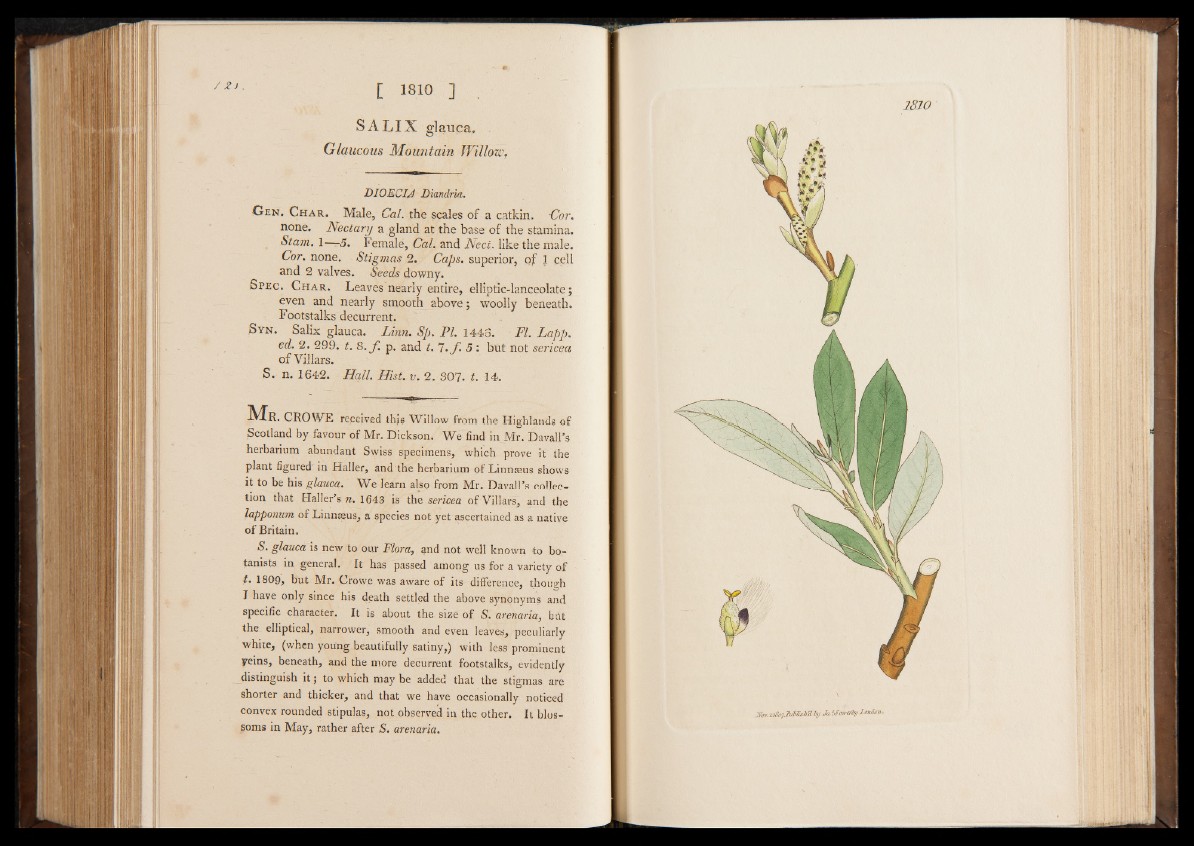
S A L I X g lau c a .
Glaucous Mountain Willowf
DIO E CIA Diandria.
G en. Char, Male, Cal. the scales of a catkin. Cor.
none. Nectary a .gland at the base of the stamina.
Stam. 1—-5. Female, Cal. and Nect. like the male.
Cor. none. Stigmas 2. Caps, superior, of 1 cell
and 2 valves. Seeds downy.
S pec. Char. Leaves nearly entire, elliptic-lanceolate;
even and nearly smooth above; woolly beneath.
Footstalks decurrent.
Syn. Salix glauca. Linn. Sp. PI. 1445. FI. Lapp,
ed. 2. 299. t. 8.ƒ . p. and t. 7. f 5 1 but not sericea
of Villars.
S. n. 1642. Hall. Hist. v. 2. 307. t. 14.
M r . CROWE received this Willow from the Highlands of
Scotland by favour of Mr. Dickson. We find in Mr. Davall’s
herbarium abundant Swiss specimens, which prove it the
plant figured in Haller, and the herbarium of Linnaeus shows
it to be his glauca. We learn also from Mr. DavalPs collection
that Haller’s « . 1643 is the sericea of Villars, and the
lapponum of Linnaeus, a species not yet ascertained as a native
of Britain.
S. glauca is new to our Flora, and not well known to botanists
in general. It has passed among us for a variety of
t. 1809, but Mr. Crowe was aware of its difference, though
J have only since his death settled the above synonyms and
specific character. It is about the size of S. arenaria, but
the elliptical, narrower, smooth and even leaves, peculiarly
white, (when young beautifully satiny,) with less prominent
yeins, beneath, and the more decurrent footstalks, evidently
distinguish i t ; to which may be added that the stigmas are
shorter and thicker, and that we have occasionally noticed
convex rounded stipulas, not observed in the other. It blossoms
in May, rather after S. arenaria.